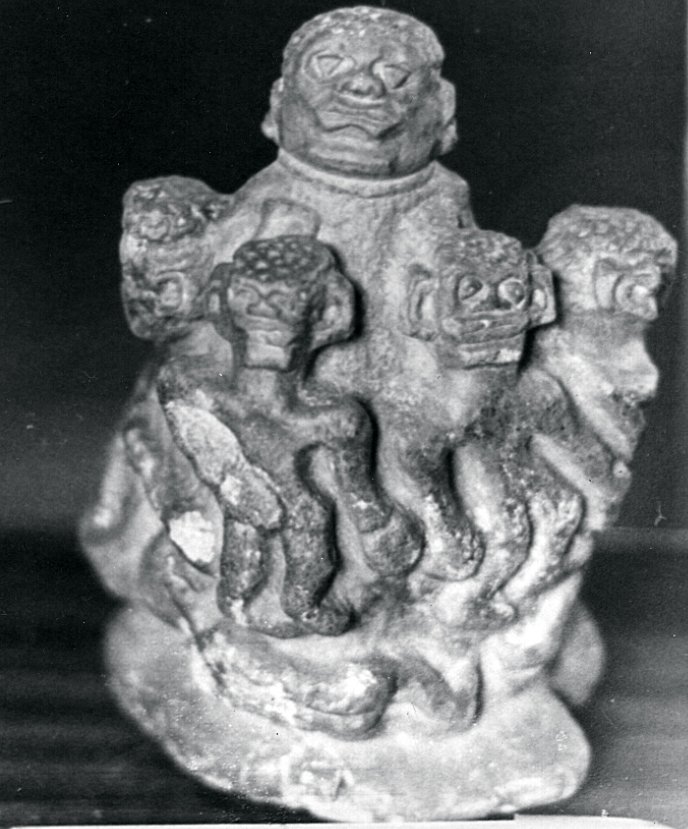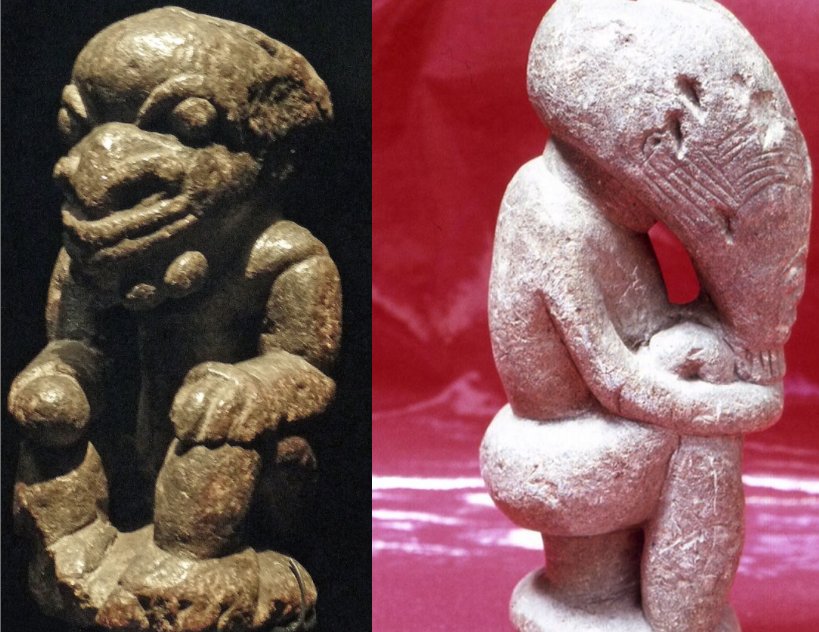Monstrous Nomoli Figures Left By Unknown Culture That Vanished Long Ago
A. Sutherland - AncientPages.com - The so-called Nomoli figures were found in Sierra Leone, West Africa.
The Nomoli are mysterious stone figures from 2,500 years to approximately 15,000 BC and even 17,000 BC. They seem to prove the existence of an advanced ancient civilization in West Africa.
Nomoli (Musée national de Sierra Leone). Image credit: John Atherton — Soapstone "Nomoli" figure from Sierra Leone (West Africa) - CC BY-SA 2.0
People of Africa also have memories of the giants who once lived on Earth. African legends describe these mighty beings as courageous and strong men with shining eyes, and their voices could be heard from one town to another.
An exciting discovery was made when a small metal ball was found in a hollow space inside the Nomoli figurine.
A legend tells that:
"They wandered without let or hindrance to places where no man had ever been before. One could not look them in the face because their eyes were so bright that it hurt one's own eyes to look at them. It was like looking at the sun."
Another legend says about divine creatures banned from the celestial empire and sent to Earth, which leads us to a representation of the "fallen angels" mentioned by various cultures.
This civilization, capable of reaching very high melting temperatures, also used the right tools for modeling perfectly spherical objects like those found inside the figures.
An analysis by the Museum of Natural History in Vienna, Austria, revealed that it is made from chrome and steel.
Left: Nomoli people, Mende, Sierra Leone; Right: Nomoli - Soapstone "Nomoli" figure from Sierra Leone (West Africa). Image credit: John Atherton, photo: British Museum, London, June 1970. - CC BY-SA 2.0
The earliest known production of steel is a piece of ironware unearthed in Anatolia (Kaman-Kalehoyuk) and is about 4,000 years old. How did it get there? And much more important - where did the metal come from?
The Somali - some were discovered at depths of 50 meters - depict mostly different human races from the so-called Caucasian to Negroid or their heads. Still, sometimes they resemble semi-human or semi-animal "monsters" and animals like monkeys, leopards, and elephants.
Some figurines depict lizards with human heads, and human figures with heads disproportionate to the rest of the body are usually shown in squatting or kneeling positions; one of the most common depictions represented by the Nomoli is a frightening-looking adult with a child.
Most Nomoli figures were made of soapstone or diverse kinds and colors of steatite, from dark green to light yellow-brown and almost white.
The Michael C. Rockefeller Memorial Collection, Bequest of Nelson A. Rockefeller, 1979 - CC0 1.0
The stone contains a high percentage of iron available in various parts of Sherbro Island in the Atlantic Ocean, located in Bonthe District off the Southern Province of Sierra Leone, West Africa.
Additionally, it is worth mentioning that none of these oral traditions indicates that the territory - now inhabited by the Mende - was previously occupied. It raises some critical questions: were there any earlier inhabitants?
Who were they? And what happened to them? Some scholars claim that these earlier inhabitants were the manufacturers of the mysterious Nomoli figurines carved in soapstone and found throughout the area now inhabited by the Mende people.
Those who sculpted the Nomoli figurines probably once occupied much of the present-day territory of the Mende, but according to ancient sources, they were pushed coastward.
Written by – A. Sutherland - AncientPages.com Senior Staff Writer
Updated on March 9, 2023
Copyright © AncientPages.com All rights reserved. This material may not be published, broadcast, rewritten or redistributed in whole or part without the express written permission of AncientPages.com
Expand for referencesReferences:
Basil Davidson, The African Genius
British Museum, London
More From Ancient Pages
-
 Remarkable Massive Statues Of Pharaoh Amenhotep III Discovered In Luxor
Archaeology | Mar 25, 2014
Remarkable Massive Statues Of Pharaoh Amenhotep III Discovered In Luxor
Archaeology | Mar 25, 2014 -
 DNA From 3,800-Year-Old Individuals Sheds New Light On Bronze Age Families
Archaeology | Aug 29, 2023
DNA From 3,800-Year-Old Individuals Sheds New Light On Bronze Age Families
Archaeology | Aug 29, 2023 -
 Bacteria Found In 4,000-Year-Old Human Molars Found In Cave – Responsible For Tooth Decay And Gum Disease – New Study
Archaeology | Mar 30, 2024
Bacteria Found In 4,000-Year-Old Human Molars Found In Cave – Responsible For Tooth Decay And Gum Disease – New Study
Archaeology | Mar 30, 2024 -
 How Did St. Nicholas Become Santa Claus? – History, Legend And Tradition
Featured Stories | Dec 22, 2023
How Did St. Nicholas Become Santa Claus? – History, Legend And Tradition
Featured Stories | Dec 22, 2023 -
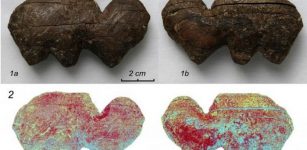 Ancient Mammoth Ivory Carving Technology Of Master Craftsmen – Reconstructed
Archaeology | Aug 27, 2020
Ancient Mammoth Ivory Carving Technology Of Master Craftsmen – Reconstructed
Archaeology | Aug 27, 2020 -
 Unique Tomb Of Roman Noblewoman Caecilia Metella Reveals Secrets Of Ancient Concrete Resilience
Archaeology | Oct 14, 2021
Unique Tomb Of Roman Noblewoman Caecilia Metella Reveals Secrets Of Ancient Concrete Resilience
Archaeology | Oct 14, 2021 -
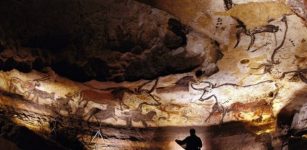 Brilliant Prehistoric Cave Paintings Of Lascaux – Who Were Their Unknown Creators?
Civilizations | Jun 2, 2014
Brilliant Prehistoric Cave Paintings Of Lascaux – Who Were Their Unknown Creators?
Civilizations | Jun 2, 2014 -
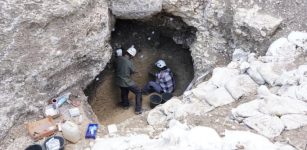 Entrance To An Unexplored Ice Age Cave Discovered Near Engen!
Archaeology | Aug 4, 2023
Entrance To An Unexplored Ice Age Cave Discovered Near Engen!
Archaeology | Aug 4, 2023 -
 Mystery Of The Lost Golden Chain Of Huayna Capac: Will The Ancient Inca Treasure Ever Be Found?
Artifacts | Dec 30, 2020
Mystery Of The Lost Golden Chain Of Huayna Capac: Will The Ancient Inca Treasure Ever Be Found?
Artifacts | Dec 30, 2020 -
 Fascinating Neolithic Society Based On Equality – Catalhoyuk, Turkey
Civilizations | Sep 18, 2015
Fascinating Neolithic Society Based On Equality – Catalhoyuk, Turkey
Civilizations | Sep 18, 2015 -
 Enigmatic Newport Tower – Built By The Vikings, Knights Templar, Freemasons Or Someone Else?
Featured Stories | Aug 1, 2024
Enigmatic Newport Tower – Built By The Vikings, Knights Templar, Freemasons Or Someone Else?
Featured Stories | Aug 1, 2024 -
 On This Day In History: First Experimental Hydrogen-Filled Balloon Reaches A 900m Altitude – On August 27, 1783
News | Aug 27, 2016
On This Day In History: First Experimental Hydrogen-Filled Balloon Reaches A 900m Altitude – On August 27, 1783
News | Aug 27, 2016 -
 Din Lligwy: Prehistoric Celtic Settlement Of Anglesey, Wales
Featured Stories | Dec 3, 2022
Din Lligwy: Prehistoric Celtic Settlement Of Anglesey, Wales
Featured Stories | Dec 3, 2022 -
 On This Day In History: Sir Christopher Wren – Famous English Architect Was Born – On Oct 20, 1632
News | Oct 20, 2016
On This Day In History: Sir Christopher Wren – Famous English Architect Was Born – On Oct 20, 1632
News | Oct 20, 2016 -
 Mysterious Skeleton Of Unusual Lady Anchoress Of York Barbican Discovered By Archaeologists
Archaeology | Feb 7, 2023
Mysterious Skeleton Of Unusual Lady Anchoress Of York Barbican Discovered By Archaeologists
Archaeology | Feb 7, 2023 -
 Real-Life Excalibur Found Underwater In Bosnia – Medieval Sword In Stone Pulled Out
Archaeology | Oct 31, 2019
Real-Life Excalibur Found Underwater In Bosnia – Medieval Sword In Stone Pulled Out
Archaeology | Oct 31, 2019 -
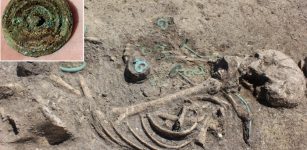 A Sensational Bronze Age Grave Of 20-Year-Old Elite Woman Found In Town Of Mány, Hungary
Archaeology | Aug 8, 2022
A Sensational Bronze Age Grave Of 20-Year-Old Elite Woman Found In Town Of Mány, Hungary
Archaeology | Aug 8, 2022 -
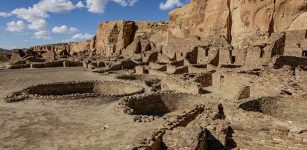 Social Tensions Among Ancient Pueblo Societies Contributed To Their Downfall – Not Only Drought
Archaeology | Apr 27, 2021
Social Tensions Among Ancient Pueblo Societies Contributed To Their Downfall – Not Only Drought
Archaeology | Apr 27, 2021 -
 Magnificent Viking Era Sword Found By Divers In The Supraśl River, Poland
Archaeology | Dec 6, 2024
Magnificent Viking Era Sword Found By Divers In The Supraśl River, Poland
Archaeology | Dec 6, 2024 -
 Gona, Ethiopia Discovery: Smallest ‘Homo Erectus’ Cranium In Africa And Stone Tools – Unearthed
Archaeology | Mar 5, 2020
Gona, Ethiopia Discovery: Smallest ‘Homo Erectus’ Cranium In Africa And Stone Tools – Unearthed
Archaeology | Mar 5, 2020

